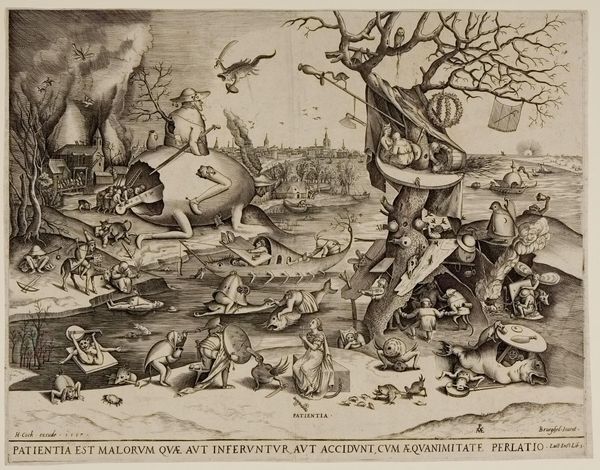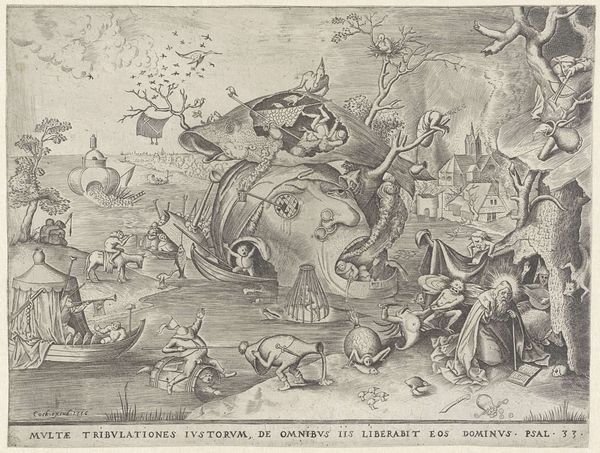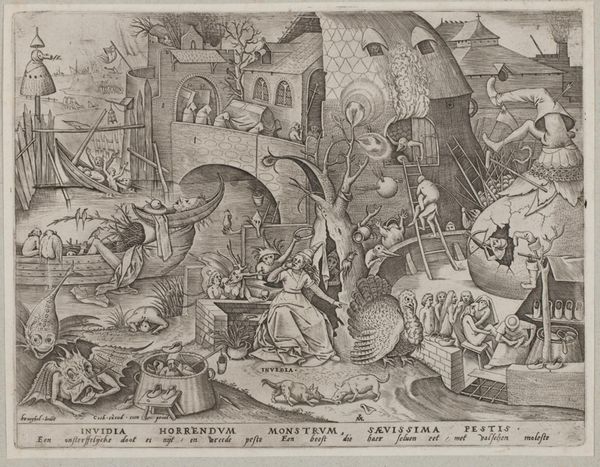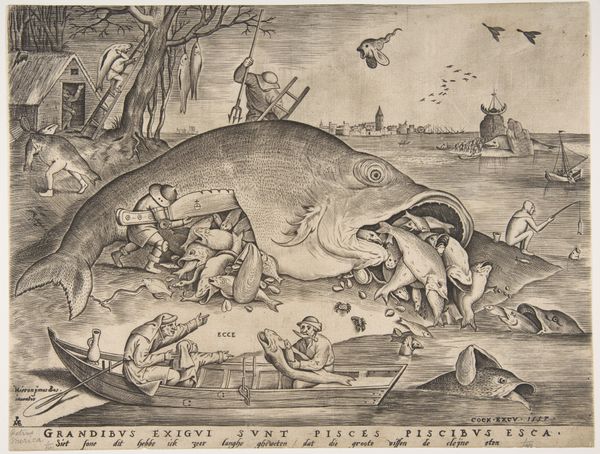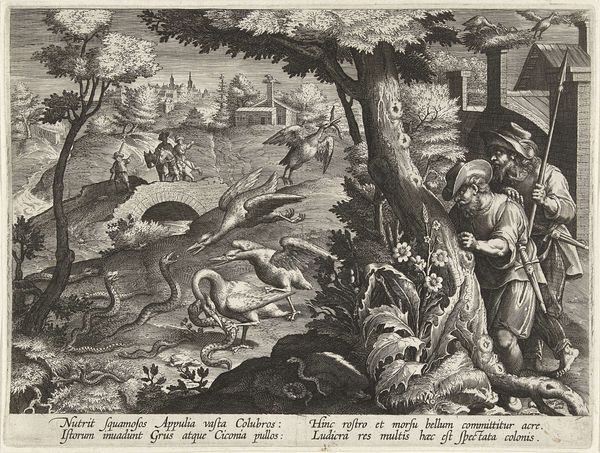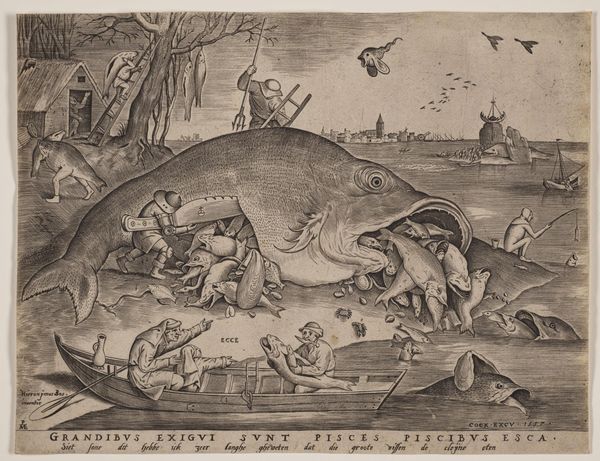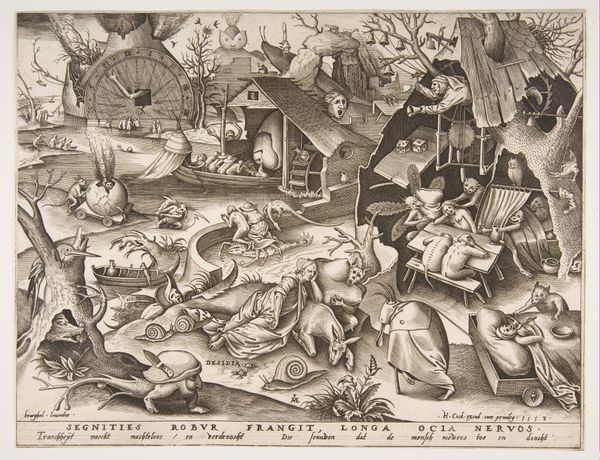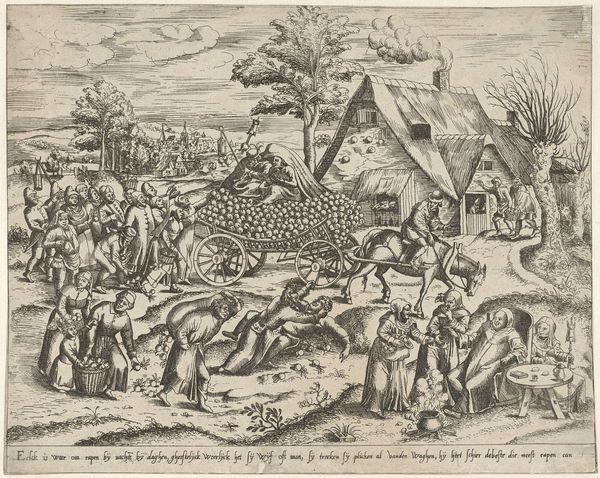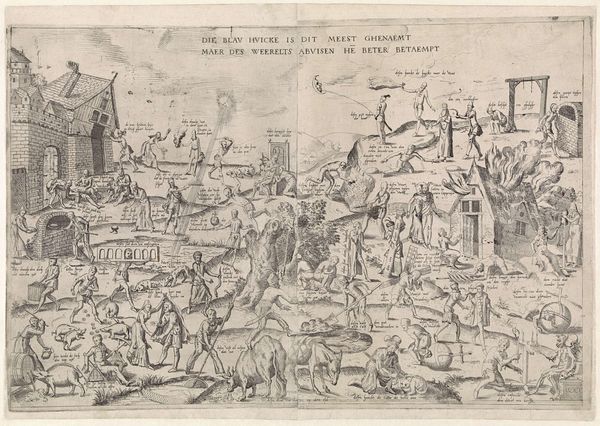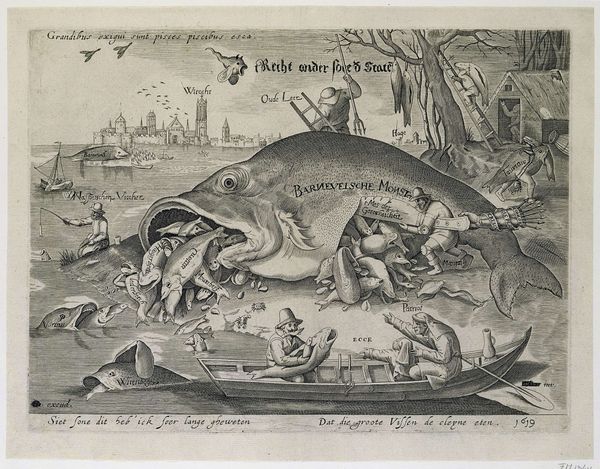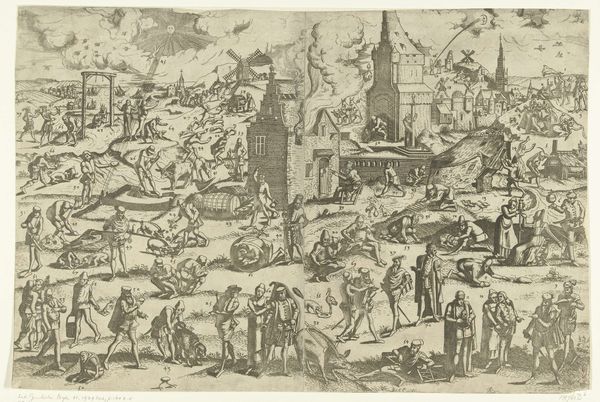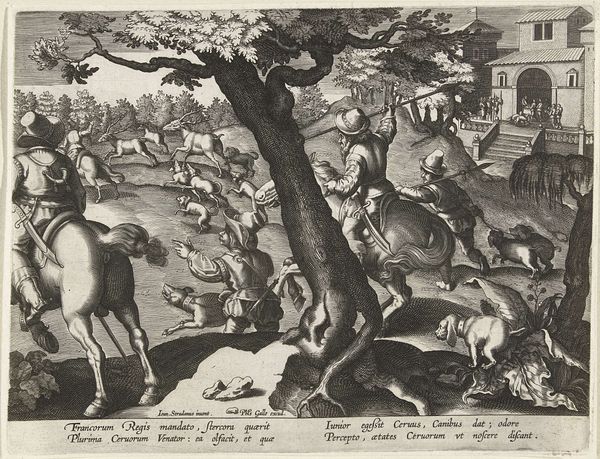
print, engraving
#
allegory
# print
#
landscape
#
history-painting
#
northern-renaissance
#
engraving
Dimensions: height 339 mm, width 435 mm
Copyright: Rijks Museum: Open Domain
Curator: This print, titled "Geduld," which translates to "Patience," was created in 1557 by Pieter van der Heyden, after a design by Pieter Bruegel the Elder. Look closely—it's an engraving, showcasing the fine lines characteristic of the medium. Editor: It’s striking—grotesque, even. All these figures contorted into strange forms within an unsettling landscape, create an anxious energy. What’s happening here? Curator: The image teems with visual metaphors related to patience, or perhaps the lack thereof. Bruegel often used prints like this to disseminate his artistic ideas widely, turning to skilled printmakers to reproduce his intricate compositions for a larger audience. The engraving technique itself, requiring meticulous labor and precision, embodies patience. Editor: So, beyond the grueling labor involved, what are these creatures really doing? Are these the punishments that come from a lapse in patience, or... Curator: Precisely! Consider the central figure, Patience, who appears almost serene amid the chaos. The landscape behind her represents the world of suffering and temptation. To achieve "Patientia est malorum quæ aut inferuntur aut accidunt, cum aquanimitate perlatio", to ‘bear injuries and misfortunes with equanimity’, is the core principle depicted. Editor: This brings up the role of women at the time too, specifically with the idea that women are to suffer with grace, not engaging or even defending against life's injustices. The composition with the figure of "Patientia" is almost like it reinforces harmful gender expectations! How do we navigate those kinds of uncomfortable observations today, looking back? Curator: It’s important to acknowledge that the visual language of the 16th century was heavily symbolic and laden with moral instruction. The work exists within this historical framework of gender and patience discourse. But by engaging with the uncomfortable aspects, such as your astute interpretation of the woman in the foreground, we foster richer conversations about gender and society. Editor: Understanding that, and really picking through the weeds to see how it all functions is… clarifying, and admittedly, cathartic. I'm left grappling with how even something advocating for inner peace can be rooted in historical anxieties about who bears the burden of such tranquility. Curator: That’s a powerful response and a fine reminder to delve into our assumptions when confronting any artwork, especially one so enmeshed with the socio-political context of its creation.
Comments
No comments
Be the first to comment and join the conversation on the ultimate creative platform.
